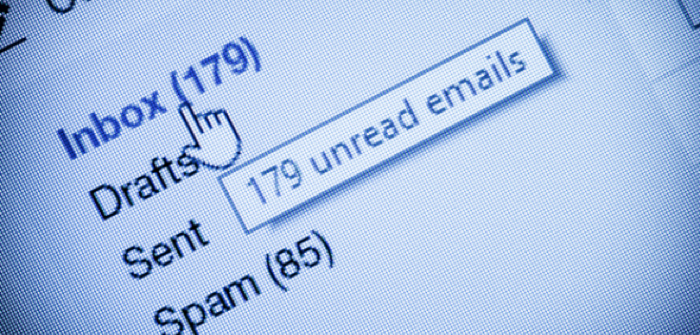Like many people, I gets lots and lots of email everyday. I spend several hours a day in my email inbox, and consequently I see a lot of email subject lines. In my opinion, an email subject line is very important for a number of reasons. It communicates the importance of the issue, helps orient the reader, and can convey a lot of information in just a few characters. Think of your email subject line as the “hook” that grabs the attention of your recipient. Given the volume of email I get on a daily basis, I know that I’m much more likely to respond to an email when it has a clear and concise subject line.
Everyday, I see such poor uses of email subject lines that I started keeping a list. Note that these guidelines only apply to general business communications, and are not intended to be a guide for writing compelling email subject lines for marketing newsletters (that’s a topic for another day). Here’s some guidance and things to think about when you write email subject lines.
1) It is worth your time (and the recipient of your email) for you to spend 2 minutes thinking about the subject line of your email. How important is the email? What do you want the reader to know right upfront? Think about orienting the user in a way that they can quickly glance at the email and know the subject matter. Your subject line should be three to five words, and no more than eight.
2) Please use full phrases, punctuation, and proper capitalization. It makes your email subject line much easier to read.
3) Here are a couple of examples of poor email subjects:
• “Punchbowl” (yes, I know the name of the company. What do you want?)
• “Resume” (I get a lot of resumes, make yours stand out)
• “Follow Up” (a much better subject line is “XYZ Follow Up”)
• “News” (news about what?)
4) Use the following structure to communicate the importance of the email.
• If it is urgent, use all caps like this: URGENT: Website issue.
• If it’s just important, do this: IMPORTANT: Website issue.
• If you just want to get someone’s attention about a topic, write UPDATE: Website issue.
5) Only use the tag URGENT when it is actually urgent. I’m very careful about when I send an email marked urgent. I expect that the person on the receiving end will drop everything and respond. If I get an email marked URGENT, I treat it the same way.
6) If you are responding to an email, please don’t rewrite the subject line. New email applications like Gmail use the subject line to group individual emails into conversations. If you change the subject line, you’re making it harder for me to manage my email.
7) Do not use all caps for the entire subject line — all caps in the entire subject line feels like you’re yelling at me. I don’t care how urgent you think it is, ALL CAPS IS JUST GOING TO PISS ME OFF. You can use all caps as described above (for an URGENT tag).
8) Don’t make spelling errors in your subject line. While they are understandable in the body of the email, your subject line is your first impression. Make it count.
9) If you have numbers to share in your email, don’t be afraid to put the bottom line on top in your email subject. Think like an email marketer and give me the bottom line on top: “$250K revenue sets new record”
10) For business related emails, don’t use the email subject line to coerce me into opening the email. If I’m interested in the topic, I’ll open it.
11) If you’re forwarding me an email, please don’t remove the Fwd tag, otherwise I’ll miss the context. (Side note: I really wish Gmail had a “Re-direct” email feature like the old Mac app Quickmail).
12) If you’re responding to an email, make sure your response is appropriate for the subject matter of the email. In other words, don’t use an old email from me to respond and write something totally unrelated. Take 2 minutes to create a new email with a different email subject line.
13) Don’t use characters such as & and @ in your email subject line. They often get garbled over the web, which will make your email subject hard to read.
14) You don’t need to put the date in your email. All email programs show the sent and received date.
15) You don’t need to put my name in the subject line. I know my name, and it doesn’t help get my attention. A succinct, well-written subject line using the above guidelines will get my attention.
16) Please don’t intentionally leave the subject line blank or forget to include one. It makes it really hard to scan my inbox to remember what the email is all about.
These are my top email subject writing guidelines. What are yours? What did I miss? Leave your thoughts in the comments.
Like it or not, we work in the age of email. You can help improve efficiency and speed up communications by writing a logical and thoughtful subject line. Take an additional 2 minutes each time you send an email, and see how much your email communications improve.


